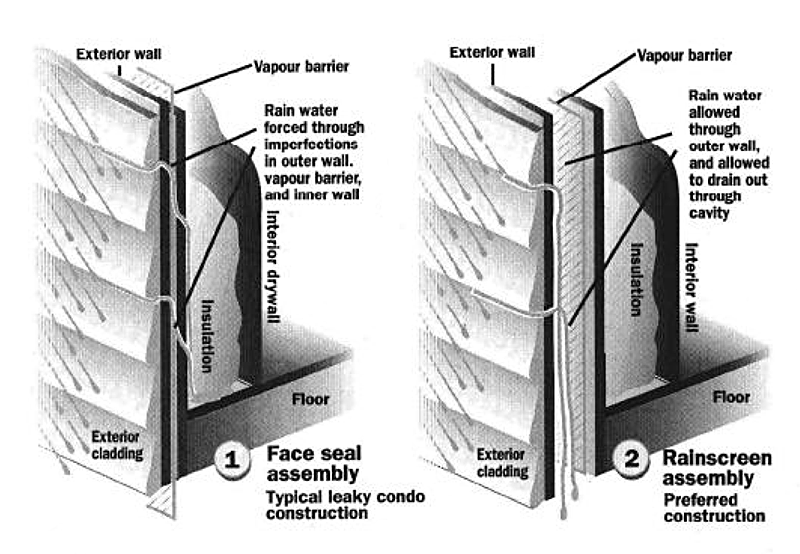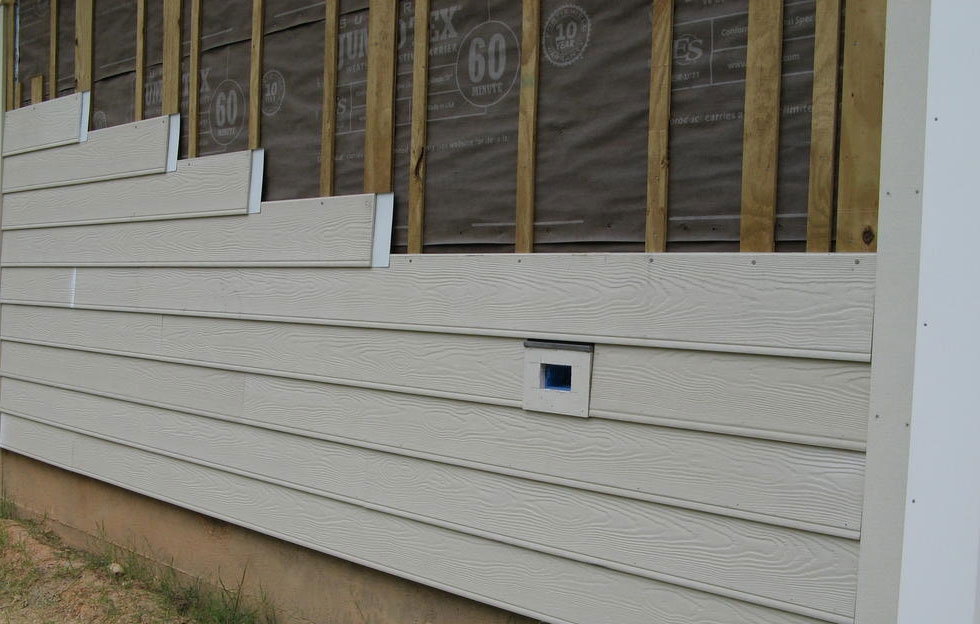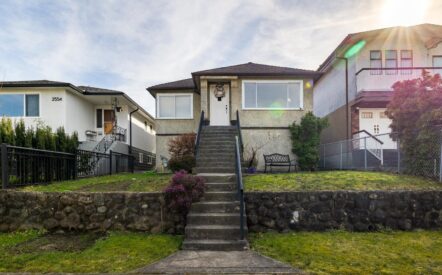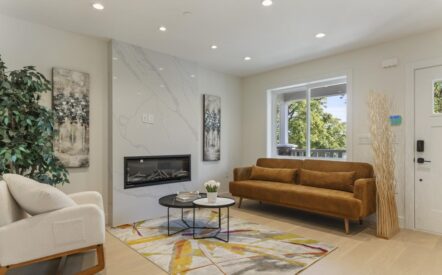Rainscreened in Vancouver, What Does It Mean?

Why Is A Rainscreen Important?
You may have heard the term Rainscreen, especially while shopping for apartments in Vancouver or the Lower Mainland of British Columbia. Realtors are quick to use the term as a sales feature on the listing, but why? We know we get a lot of rain in the area, but what does it mean to screen it? A rainscreen is a method of exterior envelope design on buildings, that allows water or vapor to safely pass through a cavity between the layers of envelope material and drain away without damaging the components beneath it. The insulation and wood framing beneath the exterior siding are susceptible to rot and mold if exposed to water penetration that cannot dry out. If an area is left leaky long enough, the wood structure beneath will weaken, eventually causing serious harm to the integrity of the building infrastructure as well as potential health and safety risks to strata residents. The longer the leak persists, the more exorbitant the cost to fix it. It is not uncommon for each unit owner in a condo building to be out of pocket by $50,000 – $100,000 when their strata assesses a special levy to pay for a full envelope rainscreen project.
The “Leaky Condo Crisis” in Vancouver
Prior to the proliferation of the rainscreen design in the early 2000’s, exterior envelopes were thought to be best built with tight fitting layers of material, preventing water penetration. We have since learned that NOTHING can prevent water penetration when you live in a rain forest, so we must allow for water to enter, drain away and dry out inside the envelope system, leaving the wood framing and insulation materials intact. In the early 2000’s, buildings built in the construction boom of 1985-2000 began to suffer from widespread leaks and decay. Water entered, mold grew and buildings became unsafe for habitation. Strata owners were unprepared to deal with the construction process and financial implications of rebuilding their exteriors. In B.C. alone an estimated $4 billion in damage occurred to over 900 buildings and 31,000 individual housing units, establishing it as the most extensive and costly reconstruction of housing stock in Canadian history. Most of the buildings effected are low-rise, 3-4 story buildings constructed of wood-frame construction, as well as some with steel, concrete, and metal stud construction types, including highrises – most notably, those sided with an exterior material called EIFS.
How Does a Strata Go About Adding A Rainscreen?

Let’s say the building is leaking on 3 out of 4 corners – the balconies are showing signs of obvious rot and getting bouncy – and the windows have black mold stains around them inside and out. At first, the strata is likely to repair the issues with a targeted approach, fixing what is most pertinent first, so that owners can save up cash to pay for the major upgrade projects on the horizon that need to be tackled. The strata will start to discuss options for exploring, funding and fixing the issues. They will typically hire an engineering firm to do a Building Envelope Condition Assessment, where core samples and surveys of residents are taken. The strata is provided with moisture readings and repair recommendations. In many cases, a targeted renewal approach costs less up front for the owners, but more money in the long run. The building can end up looking like a patch work of old and new materials, sometimes devaluing the market prices of resales. If the engineering reports detail that the structure is being weakened in a widespread fashion and the council opts to renew the envelope, they will put the project out for tender to different contracting firms to offer quotes. Several, sometimes tense, strata meetings later, a contracting firm will be chosen to do the work and a Special General Meeting or Annual General Meeting will be called, so that all owners can vote on the best strategy to fund the quoted project. Eventually, after many months of meetings and fund collection, the project will ensue. Tarps will be wrapped around the building for approximately 3-9 months and residents will be living in a construction site for nearly a year.
How Does A Strata Fund A Rainscreen Project?
The strata will call an Special General Meeting or Annual General Meeting to vote on funding strategies. They may opt to take some money from the Contingency Reserve Fund (the strata’s savings account), but these accounts are most often drastically under-equipped, typically to keep monthly strata fees low for owners. The strata may then opt to raise strata fees to boost funds, borrow the amount from a bank with interest on a payment plan and/or put owners on a special levy payment schedule. It is not uncommon to see rainscreen levies of $50,000+ per unit. We often see this split into equal payments spread out over a year or two. I recommend understanding your mortgage and the ability to refinance for anyone buying an older condo that carries this significant risk. In many cases it can be wise to refinance the cost, to keep your asset operating itself. The way I see it – you can either buy something new, and have the total operating costs inside your mortgage, or you can buy something old and continue funding its maintenance outside of your original debt. Real estate values are quite relative in this way.
* It’s important to keep in mind that many lenders will not fund a traditional mortgage on a building that needs to be imminently rainscreened. Lenders apply a risk quotient to your purchase file and often ask to read the strata documents. If the leaky building is risky in their eyes, then you as a buyer will need to have extra down payment funds, or very low-risk income levels, to accomplish obtaining a mortgage. Some risky buildings are flagged by CMHC and Genworth and cannot be insured at all, so no one with less than 20% down payment can buy a property there. For this reason, it can be a challenge to sell homes in a building that holds this kind of risk, especially in the entry level market. One bedroom condos in Mount Pleasant, for example, have lost market value with the decreased demand until the project is complete, which can take years.
The Good News!
If you can manage the costs and live through the mess, you can make great equity on your resale, once a strata is rainscreened. To maximize capitalization on your real estate investment, you can either renovate a unit’s interior, or you can pay your share to renovate the exterior. You might have to reinvest $50K+ into your asset, but you could easily make an additional $100K+ on your resale value. This is because the building looks brand new, the purchasers risk goes down measurably, and it will attract buyers with higher incomes than prior. I would go so far as to say it can be wise to invest in some leaky condos. If you rent it out while owning, perhaps for a decreased rent amount – your expenses can create a positive tax implication, and you can resell later for much more.

How Can You Tell If An Apartment Has A Rainscreened Exterior?
- Well first off, you can ask the listing agent; however in many cases the building will be partially rainscreened, so it’s important to further verify where and when the work was done with documents from the strata.
- Reading the strata documents is an important method of due diligence for any condo purchase, so be sure to read through them carefully with your real estate agent. If the information you need is not obvious, call the property manager or ask to speak with a council member.
- Hanging around the front door and speaking with neighbors is some of the most thorough due diligence one could do prior to purchasing, and something I do for all my clients in their condo deals.
- Walk around the building, doing a thorough visual review of the exterior components. Are the balconies sloping or suffering from rot? Can you see mold or staining on the siding? Around the windows/doors? In many cases, the wind driven rain comes from the east in Vancouver. This, coupled with the breakdown in sealant around windows at the south elevation of the building that comes from sunshine weathering, creates the weakness that allows water to penetrate. Check the southeast corner of the building most diligently.
- Buildings that have been rainscreened have typically added flashing (metal detailing strips) to shed water from the tops of windows and to break up large wall faces often hit with sun and rain.
- Check through old listing history with your agent to see how the exterior building photos have changed over the years and read the old listing comments for further evidence of renewal work.
If you have any questions about Rainscreen Systems in Vancouver, call me anytime!
– Willo Jackson
778-554-9557

Ruthie & Willo at Stilhavn



